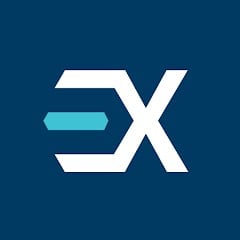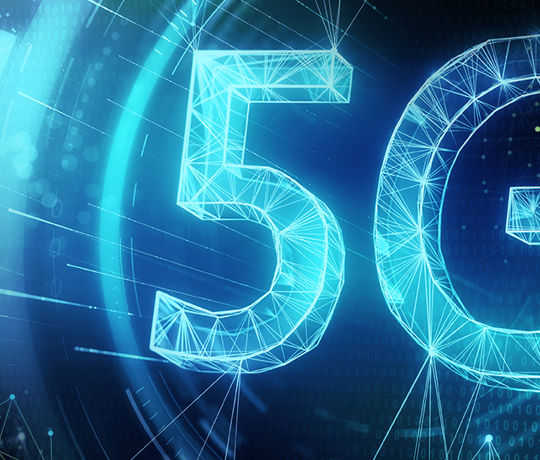Search results
In data center environments, an increase in density can bring important benefits to operators. To support high-density data centers, new ultra-small form factor fiber connectors (USFF) such as SN and CS are gaining popularity amongst both datacom and telecom operators. Transceiver types with these connectors have been adopted by QSFP-DD, OSFP and SFP-DD Multi Source Agreement groups (MSAs) to increase bandwidth and at least double the density in order to address the need for ultra-high density optical interconnectivity demands of enterprise and hyperscale data centers. As a result, new fiber configurations are emerging to support new connector types such as Leaf and Spine. These connector types are emerging as the interconnect of choice. As industry standards continue to evolve, new duplex connector types are joining 400G breakout applications. And data centers are looking to adopt emerging trends to add flexibility in network cabling design and deliver on high-speed migration inside the data center. Key takeaways CS and SN history, standards and applications QSFP-DD/OSFP and SFP-DD transceiver overview fiber testing best practices protocol testing 2x100GE and 4x100GE breakout cables Listen to this webinar, jointly hosted by EXFO and Senko, and learn how next-generation data centers can both future-proof themselves against inevitable increases in demand and ensure network reliability.
Resources5G telecommunication infrastructures around the globe rely heavily on photonic components, such as integrated photonics. These cutting-edge optical devices are present not only in the telecom landscape but are also considered for sensing, medical or quantum computing applications. The spectral characterization of such components calls for new cutting-edge testing capabilities, going up a gear in testing speed without any compromise on accuracy or resolution. In this presentation, I will showcase EXFO’s series of spectral testing solutions for active and passive optical components. I will focus on the CTP10 component testing platform, which is a fully integrated solution for spectral characterization. The latest modules available on the platform measure insertion loss and polarization dependent loss over an unprecedented wavelength range. Key takeaways: High speed measurement with high accuracy and repeatability Integrated, easy to setup IL PDL solution Full telecom wavelength range Automation examples
ResourcesDespite the COVID-19 pandemic, emerging markets are seeing tremendous growth and transformation, thanks to 5G's support for heterogeneous mobility networks with advanced distributed cloud services that combine wireless networks with an agile, virtualized and software-defined edge cloud. In turn, 5G's growth is driving the need for such approaches as edge computing architectures, which place compute, storage and connectivity close to the data sources, either near or at the access network edge. Unlike prior generations of wireless technology, 5G relies on strong, distributed cloud foundations of network and compute to power new market growth. Low latency, high bandwidth, trusted computing and storage rank are all core benefits of edge computing solutions. As a result, edge computing enabled with 5G can open up vast opportunities for application developers in manufacturing, gaming, automotive and other industries. Service providers can deploy edge computing to enable specific services, applications and use cases. For this reason, edge architectures must be redesigned to meet the stringent SLAs (Service Level Agreements) of emerging applications, detect problems early and prevent service outages. Indeed, the combination of 5G and the Internet of Things (IoT) will foster new applications that need connectivity not just between people, but also between things. Edge computing, with its new reference design, will also tap into embedded machine learning systems and artificial intelligence back-end modules to empower network intelligence and boost service agility and deployment. Open source technologies and open white-box network elements will provide key software and hardware components for these reference designs. AI/ML can also play a significant role in improving network operations, especially at the network edge, and create new service opportunities. Key takeaways from this webinar will include: Edge computing with next-generation 5G technology. Edge computing use cases with 5G technology. Open source and standards for edge computing. Next-generation edge reference architectures. Edge deployment considerations. AI/ML-powered adaptive assurance for edge computing deployments.
ResourcesThis educational webinar covers the generation and professional reporting of field results after performing fiber-related tests using an OTDR. Join speaker Kevin Peres as he walks you through the workflow of test data reporting using EXFO’s FastReporter, importing OTDR/iOLM traces, cleaning up the data, analyzing the results, and generating custom Excel and PDF deliverable closeout package reports. Key takeaways: Import of OTDR SOR and EXFO format traces Cleaning up identifiers and naming convention Analyzing and validating results Matching files from multiple test types Generating custom closeout packages.
ResourcesVous êtes un acteur concerné par le déploiement du Fibre to the Home (FTTH)? Vous souhaitez en savoir plus sur la méthodologie, les normes et les dernières technologies associées? Ce webinaire est fait pour vous! 9h30 : Introduction, présentation de BICSI - Gautier HUMBERT, Président de BICSI Europe Occidentale 9h40 : Présentation du nouveau Guide Pratique au réseau en fibre optique FttH dans le parc immobilier existant - Didier CAZES, Rapporteur du Groupe de Travail "Bonnes pratiques professionnelles", OBJECTIF FIBRE 9h55 : Solutions techniques innovantes pour le raccordement client - Arnaud LE DISSEZ, Responsable Produits Connectivité, Solutions Telecom Europe du Sud, PRYSMIAN GROUP 10h30 : Tests de la zone verticale : Quelles bonnes pratiques pourrions nous adopter pour réduire les réinterventions ? - Romain LEMOINE, Channel Manager, EXFO 11h05 : Pause pour les participants - 5 minutes 11h10 : Soudure optique : des évolutions technologiques pour diminuer son taux de reprise et augmenter ses performances. Réalité sur la soudure entre fibre FTTH (G657A2) et fibre réseau (G652D) - Mathieu HUSSON, Président fondateur d’INFRACTIVE 11h45 : Le mot de la fin - Thierry BESREST, Président de BICSI France
ResourcesVous souhaitez en savoir plus sur les solutions offertes par le FTTx pour les entreprises? Nouvelles offres et technologies, méthodes d'installation et de test, success stories? Ce webinaire est fait pour vous! 9h30 : Introduction, présentation de BICSI - Gautier HUMBERT, Président de BICSI Europe Occidentale 9h40 : La pérennité du FTTH - Philippe FOUET, Directeur Technique, Cercle CREDO 9h55 : Le POL (Passive Optical LAN) ou les bénéfices de l’architecture FTTH au sein des bâtiments intelligents - Remy DOLECKI, DC / IBN Sales Manager France & Switzerland, CORNING 10h30 : Introduction au FTTO et retour d’expérience Waycom - Géraud DANZEL D'AUMONT, Sales Manager Western Europe, NEXANS Advanced Networking Solutions 11h05 : Pause pour les participants - 5 minutes 11h10 : Optical LAN, a better way to structure the network - Hervé GAUDILLAT, Fixed Networks Business Development, NOKIA 11h45 : Limite de la mesure en réflectométrie classique : Comment augmenter la fiabilité des mesures pour les clients FTTE ? - Romain LEMOINE, Channel Manager, EXFO 12h20 : Le mot de la fin - Thierry BESREST, Président de BICSI France
ResourcesThis educational webinar will cover tips and techniques to improve your OTDR testing. Join speaker Kevin Peres as he shares tips that will give you a better understanding of how to optimize OTDR settings such as pulse width and averaging time. We will go over common issues (e.g., misconfiguration, faulty launch cables and dirty connectors) and how to quickly identify and resolve these issues. Key takeaways: Determining the best range, pulse width and duration for your test application Optimizing setup for troubleshooting damage versus high-count fiber testing Validating results before you leave the job site File-naming and -saving conventions to improve close-out package workflow
ResourcesThis educational webinar covers testing, analysis, troubleshooting, and reporting using an OTDR. Join speaker Kevin Peres as he walks you through the fiber testing fundamentals (e.g., what is pulse width) before taking on more advanced issues such as ensuring that the OTDR is set up properly and how to validate the results onsite. In the next instalment, Kevin will cover best practices when it comes to saving and reporting field test results. Key takeaways: OTDR setup Splice and connector critical parameters Trace interpretation and advanced troubleshooting Validation; getting it right, the first time Trace identification, test result saving and reporting
ResourcesMarket demand has begun for 400G as a service. The trial record for 400G has been building across a number of applications including data center interconnect, intra-data center, over subsea links, in the terrestrial network core and for enterprise. Leading CSPs have begun to offer 400G and now are looking to scale. Demand for 400G will ramp in 2022 across all geographies. What are the early uses cases for 400G for the CSP, ICP, IX and enterprise communities? What does network as a service mean and how does that align with automation, scale, and flexibility? Why will network validation/troubleshooting be critical as operators look ahead to higher rates? Prospective clients of 400G as a service will be technically demanding, and asking for FEC performance, Optics validation, RFC2544 and Y.1564. Who Should Attend High capacity, wholesale service product managers, CTO, CIO, strategy leads of optical networks, heads of emerging technologies, network architects, network operations, installation and test contractors, sales, and business development leads. Financial analysts and media are encouraged to attend. Key Topics for Discussion Key use cases for 400G as a service 400G coherent port shipments to date What are the key performance metrics for 400G as a service? What do CSPs need to consider for breakout cables and AOCs? How can CSPs assure link stability and provide latency measurements? Answers to audience questions during live Q&A
Resources5G promete revolucionar la forma en que operan las redes móviles. Capacidades como 1 Gbit / s para el dispositivo, latencia de 1 ms y disponibilidad de cinco 9’s proporcionan una oportunidad sin igual para la innovación de servicios. En 5G la fibra es la respuesta para llevar las comunicaciones al siguiente nivel, sin embargo, muchos problemas de servicio que impactarán estas redes se remontan a problemas de calidad en un cable de fibra. Tener el equipo de prueba adecuado para detectar y diagnosticar rápidamente problemas es esencial para una resolución rápida. 5G no ser á la excepción; de hecho, dada la tendencia hacia un mayor ancho de banda y mejor calidad de señal, muchos parámetros que no afectan las redes existentes se harán notar a medida que se exigen mejoren rendimientos operativos en las nuevas tecnologías a ser implementadas Acompáñenos a esta serie de cuatro seminarios web para EXFO será un honor que nos permita mostrarle las opciones de equipos de medición y metodologías que ofrecemos; queremos ser su mejor aliado al momento de ejecutar o resolver sus problemas, donde sea que una red de alta velocidad sea desplegada. Sesión 2 - 30 junio | SLAs al más alto nivel, cómo saber que sí cumples con ellos: ¿Qué parámetros y qué pruebas debes ejecutar? Se trata de los SLAs más exigentes que hemos conocido en enlaces masivos hacia el usuario final. Sesión 3 - 14 julio | Sincronía: Conceptos básicos y parámetros que deben ser vigilados y medidos en redes de telecomunicaciones Sesión 4 - 28 julio | Monitoreo de enlaces Ópticos (L1) de redes de alta velocidad: El crecimiento masivo de enlaces de fibra óptica obliga a contar con un monitoreo 24/7 para la detección y ubicación inmediata de daños en la infraestructura.
Resources









